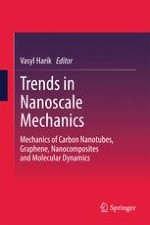2014 | OriginalPaper | Chapter
Nanomechanics of Graphene Sheets
Registry Matrix Analysis and Interfacial Sliding
Activate our intelligent search to find suitable subject content or patents.
Select sections of text to find matching patents with Artificial Intelligence. powered by
Select sections of text to find additional relevant content using AI-assisted search. powered by
